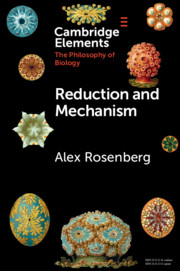Element contents
Reduction and Mechanism
Published online by Cambridge University Press: 30 April 2020
Summary
- Type
- Element
- Information
- Online ISBN: 9781108592949Publisher: Cambridge University PressPrint publication: 04 June 2020
Bibliography
- 18
- Cited by



